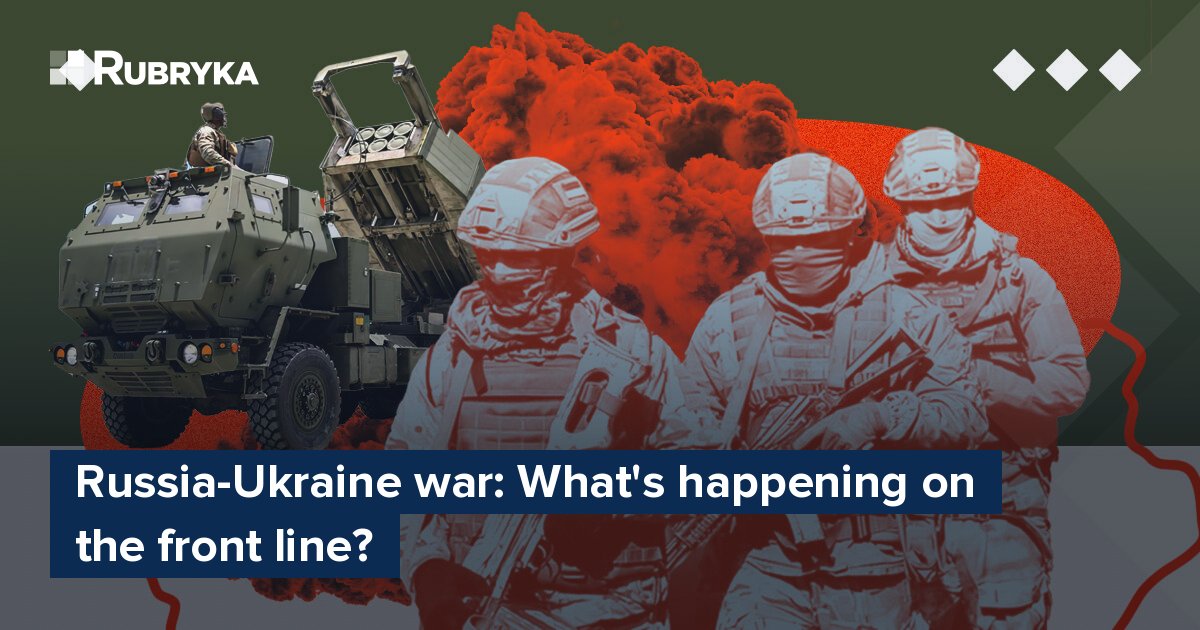
Since Russia unleashed its brutal full-scale war against Ukraine two years ago, the Ukrainian armed forces have been repelling the aggression with both successes and setbacks. Since Ukraine's spring counteroffensive in 2023 was not as successful in terms of territorial gains as the previous one in the fall, experts and politicians alike argued that the fighting in year two of the invasion was at a stalemate. As the situation in 2024 changed with a new Russian offensive, Rubryka will share the latest Russia-Ukraine war front line news.
Russian offensive in Kharkiv region

News from the front line in the north-east near Kharkiv as of June 3, 2024. Source: Institute for the Study of War (ISW)
Since Russia's failed attempt to occupy Ukraine's northeastern city of Kharkiv in the early stages of the large-scale invasion and the sweeping liberation of the Kharkiv region in September 2022, the second-largest Ukrainian city and surrounding areas have been under constant Russian rocket and drone attacks. The Kremlin set a vicious goal to "wipe out Kharkiv from the face of the earth" and create a so-called "sanitary zone" around the city to stop the Ukrainian strikes from reaching Russian soldiers and equipment in the Belgorod oblast used to attack Kharkiv and nearby towns.
May 10, 2024, marked a new Russian offensive into the Kharkiv region — the move predicted by Kyiv, which had warned about Russia massing troops at the northeastern border. Shifting focus from the southern and eastern front lines and using the delays of the Western aid deliveries, the Russian army attempted to stage a ground attack into Vovchansk, the town 74 km north-east of Kharkiv and just 5 km off the Russian border. Ukrainian President Volodymyr Zelensky then stated, "Ukraine has met [Russian forces] there with our troops, brigades, and artillery."
Since the start of their offensive, Russian forces have managed to seize several Ukrainian villages. The Institute for the Study of War (ISW) stated in the June 3 report that Russians advanced north of Kharkiv toward the town of Lyptsi, as confirmed by geolocated footage on May 31. According to the Ukrainian General Staff, fighting continues near Lyptsi, and Ukrainian soldiers strengthen positions and defensive lines on the Kharkiv front. As Russia increases its troops near Kharkiv, Ukraine's command draws reserves into the area.
As of May 30, authorities and volunteers evacuated about 12,000 Ukrainian civilians from the areas of Vovchansk and Lyptsi. As evacuations persisted because many residents refused to leave their homes, Russia continued shelling and bombing the towns of the Kharkiv region. One of the most recent deadly attacks was the May 25 Russian bombing of a hardware and garden center in Kharkiv that killed 18 civilians and injured 48. Another attack on May 31 killed four and injured 25.
Ukraine is allowed to strike inside Russia
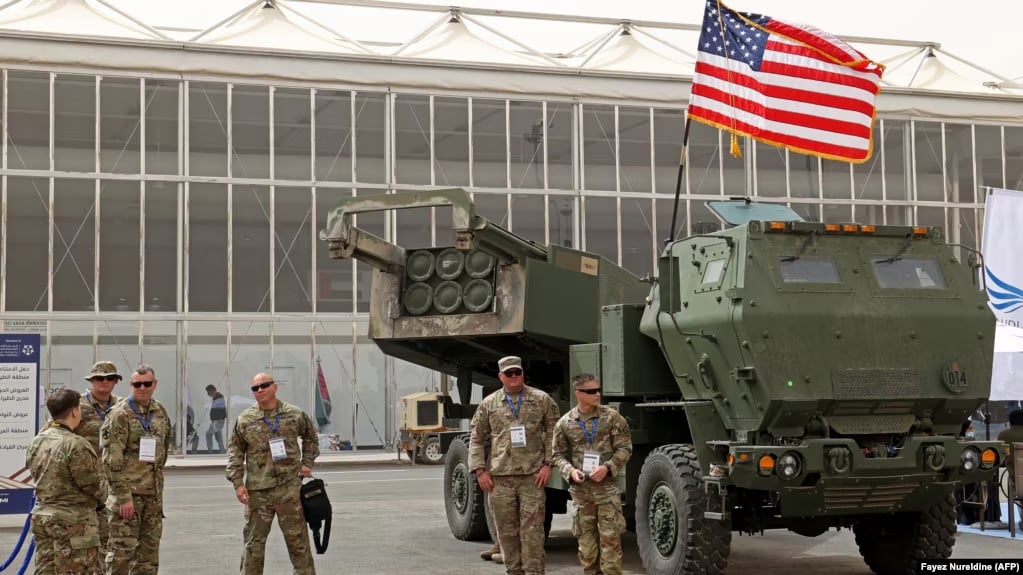
US service members near the HIMARS missile system, March 2022. Providing Ukraine with HIMARS missile systems changed the course of the front-line developments at the time. Photo: Fayez Nureldine/AFP
After three days following the major Russian offensive in the Kharkiv region, Kyiv asked permission to use US weapons against military targets in Russia's Belgorod oblast, which attacked Ukraine's northeastern towns. In a surprising move, President Joe Biden approved the request with the restriction of American systems, particularly HIMARS, being deployed only against facilities used for strikes against Kharkiv.
Germany followed suit with Steffen Hebestreit, Chancellor Scholz's spokesperson, stating that Ukraine was entitled to defend itself, "including [with] weapons that we have supplied." Emmanuel Macron, the president of France, which earlier sent Storm Shadow/Scalp long-range missiles to Ukraine, also said Kyiv should be allowed "to neutralize the military sites from which the missiles are fired and, basically, the military sites from which Ukraine is attacked." The BBC reported, citing sources, that such a statement "is seen as permission" to use these missiles to strike Russia.
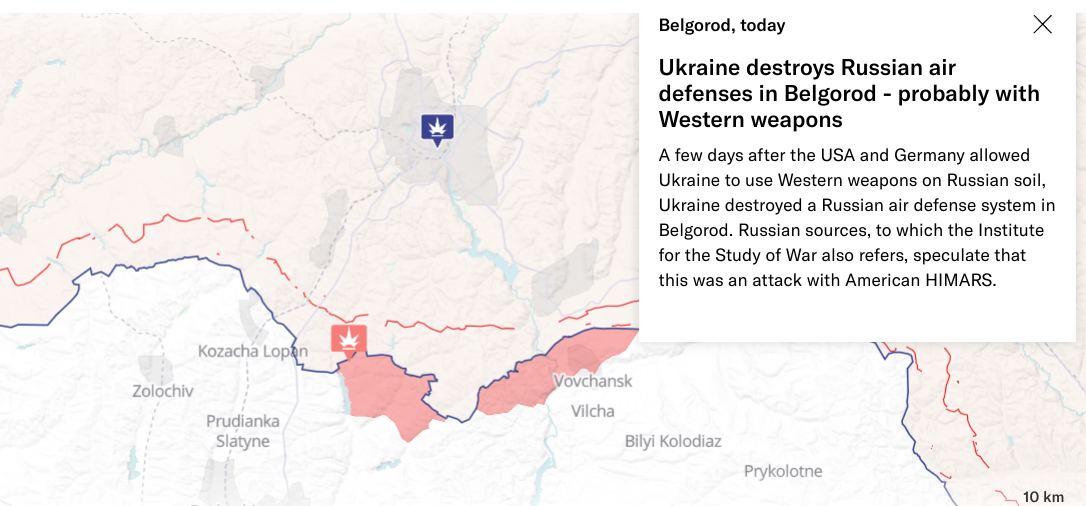
The screenshot of the interactive map by the Swiss newspaper Neue Zürcher Zeitung (NZZ) shows the Kharkiv front line developments after the US and Germany allowed Ukraine to use their weapons against facilities in Russia. Photo: NZZ
Amid unfulfilled threats from Moscow that it would respond to the US and other partners lifting the ban with "consequences," the Biden administration's change of heart influenced the front line developments near Kharkiv. Phillips O'Brien, a British military analyst and professor of strategic studies at St. Andrew University, stated in his June 1 review that "the Kharkiv offensive is a Russian strategic failure for now" — the offensive "ground to a halt" and Russian troops experience the highest losses in the war as Russia made itself vulnerable "to attack by US systems in a way that would have been inconceivable before."
The ISW recently reported that Ukrainian forces struck a Russian S-300/400 air defense system in the Belgorod oblast, around 60 km from the Kharkiv front line. Experts said two launchers and a command post north of the Russian city of Belgorod were destroyed, likely with HIMARS on June 1 or 2. The Ukrainian General Staff are yet to comment.
What's happening in the east and south?
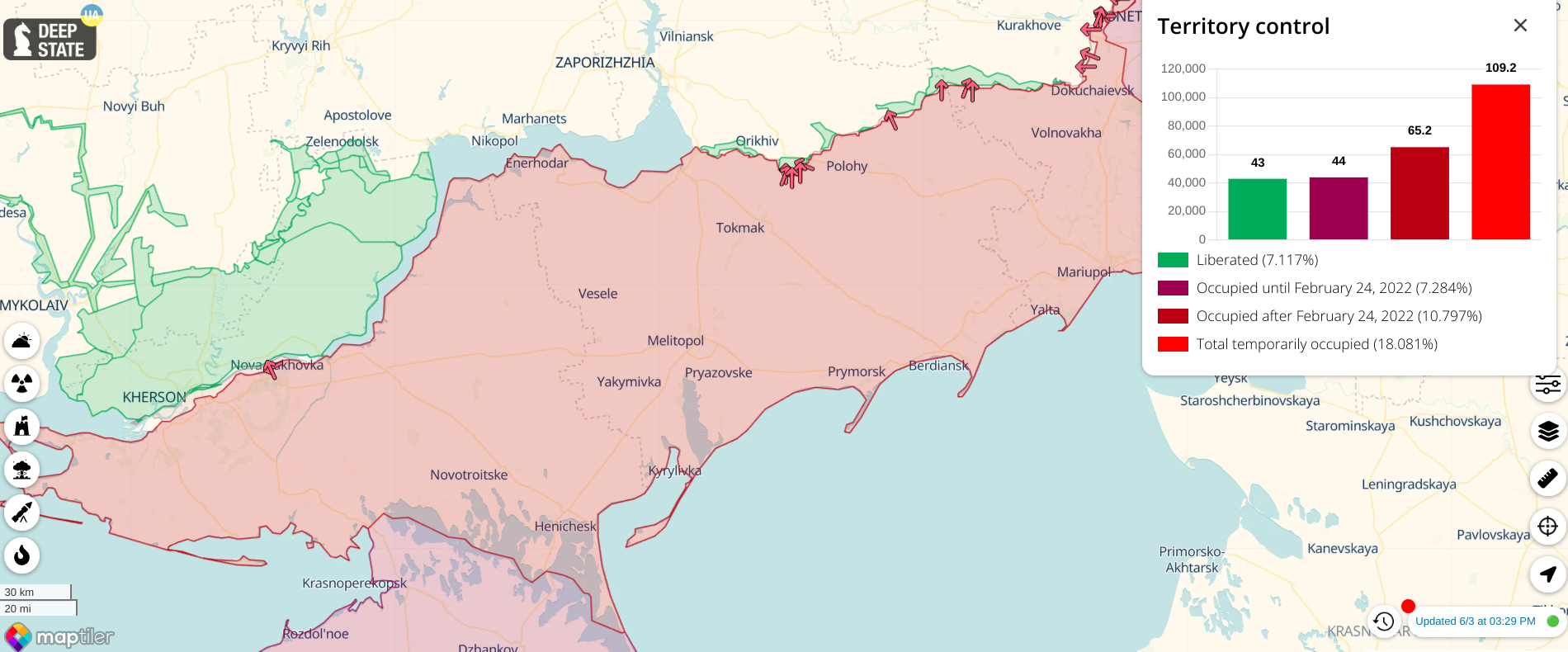
The current state of the southern front line in Ukraine. Screenshot: Deep State
After the Russian forces started their May 10 attack on the Kharkiv region, analysts continually stated that the goal was to distract the Ukrainian army's attention from other front lines. Experts at reputable media outlets, like The Financial Times and The New York Times, said Russia's Kharkiv offensive was meant to draw Ukrainian forces away from the east.
These alarming concerns have not come true. The ISW military experts reported no confirmed changes to the front line near the eastern city of Chasiv Yar or west and southwest of Donetsk. Russian forces achieved only marginal gains in the east of Ukraine — west of Avdiivka City and the Donetsk-Zaporizhzhia region border — and in the south, near the village of Robotyne. According to the Ukrainian South Operational Command Spokesperson Dmytro Pletenchuk, Russian assaults in the western Zaporizhzhia and Kherson front lines decreased, and Ukrainian troops maintained positions.
What now?
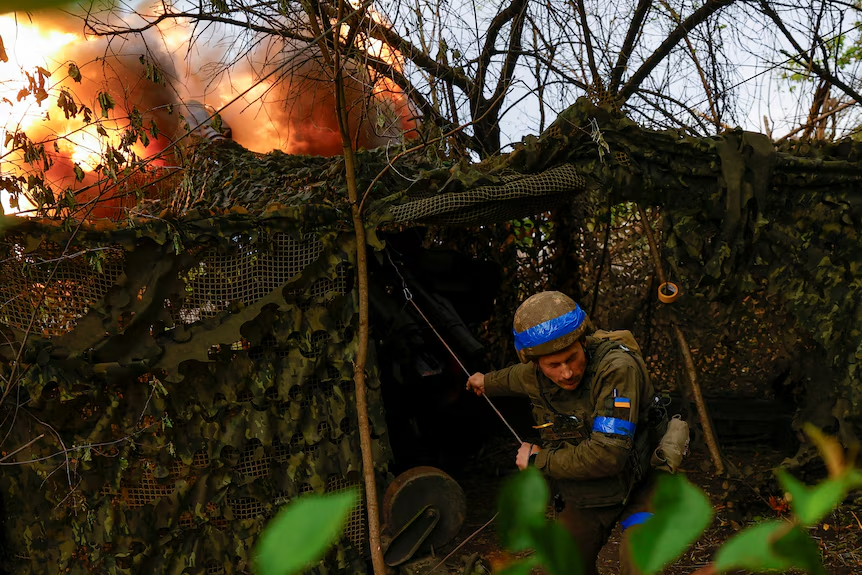
A Ukrainian artillery commander fires toward Russian troops on the Kharkiv front line on May 21, 2024. Photo: Valentyn Ogirenko/Reuters
Even though Russia intensified its attacks across the entire Ukrainian front line and late deliveries of Western support held Ukraine back, the Ukrainian armed forces continued to destroy Russian military capabilities and inflict losses on aggressor troops. With a new game-changer decision to allow Ukraine to strike into Russian territory, the invaded country may have the advantage in the course of the war and use this opportunity to plan a successful counteroffensive. As Ukraine is working on its own long-range weapons, like Neptune missiles and UJ-26 Beaver drones, it is still dependent on military aid from its partners across the globe. Whatever the front-line situation might be, the Ukrainian army needs more support — air defense systems and jets to deter air attacks and protect civilians and artillery and armored vehicles to push out the enemy of the occupied territories.



